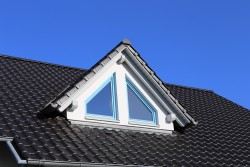Much has been written about the performance of modular houses; each design is different and hence there is no standardisation of the interfaces. To add to this, composite panel construction does not fall under any recognised standard. As a result, manufacturers need to produce design and performance data for the structural and environmental aspects of the modular build, as well as the transportation and construction. This forms the basis for the building control assessment of compliance with the building regulations and the quality of the installation.
Some elements of a modular build are "off-the-shelf" and can be interchangeable; the performance of these items should not be overlooked. Prefabricated chimneys, dormers, door canopies and bay windows are frequently used add-ons which fall outside the scope of any European or British standard, yet their structural and thermal performance and water tightness are crucial in maintaining a functioning building.
These add-ons can be bought from a supplier as standard items and are thus interchangeable, yet their interaction and interface with a building can vary tremendously. For some items, i.e. chimneys and dormers, there are industry recognised standards developed by a trade association in conjunction with the NHBC which provide some performance parameters, both during installation and in-use under wind loading, impact, water tightness and long-term durability.
When installing add-ons onto traditional built properties, building control will not accept any item that does not have associated performance data but when used on a modular build, the whole building is considered and the same level of performance does not need to be demonstrated.
The add-ons physically connect to a building which results in penetrations through the cladding and the frame. The connections must demonstrate water tightness when installed as any failures due to incorrect installation techniques will cause damage to the frame long-term and the building performance in the short-term.
During the manufacture of factory-built modular buildings, there is inherently a lack of visibility of the construction process by building control who are required to sign-off the buildings. This lack of visibility means that the installation and sourcing of these ancillary products is not checked and approved by a third party; this can therefore be a weak spot in the construction.
Perhaps the industry should make a voluntary move towards better visibility of the production process by third parties to ensure that the biggest selling point of factory manufactured buildings is not lost.
Find out more about Lucideon and its services for the offsite and modular buildings sector here.









